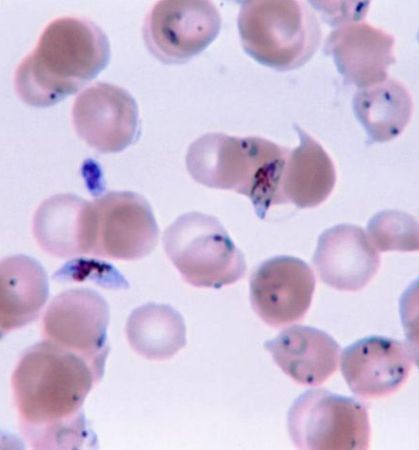Malaria is hidden in the bone marrow

Plasmodium vivax is the malaria sufferer responsible for the majority of malaria cases in sub-Saharan Africa. An international team of microbiologists informs mBio that P. vivax not only circulates in the blood, but also hides in the bone marrow. Research on humans and non-human primates has shown that bone marrow is an important breeding and transmission site for P. vivax. People who do not show any symptoms of malaria and who do not detect parasites in their blood may have them in their bone marrow. This discovery allows us to understand why so many P. vivax infections are undetected.
Infected people who do not show symptoms infect others before they become ill, says veterinarian Nicanor Obaldia III, who headed a research group together with Elamaran Meibalan from Harvard University. Scientists have shown that P. vivax gametocytes mature very quickly in the marrow and can be passed on to mosquitoes before the outbreak of the epidemic.
In the past, P. vivax infections were considered to be a mild form of malaria because the disease is often asymptomatic, there are few parasites in the blood and the disease is less fatal than Plasmodium falciparum, which is responsible for 90% of all deaths from malaria. However, P. vivax can cause very serious, even fatal, symptoms, and one in three people on earth is exposed to this infestation.
Matthias Marti from Harvard University points out that a hidden zarodziec in the marrow can avoid being detected by blood tests and that the health service will not be aware of the actual number of patients and the size of the potential epidemic. If you have a large reservoir of volunteers in your marrow who are not present in your blood, you can misjudge the number of people carrying the disease," explains Marti.
We suspected that somewhere in the body there was a reservoir of foresters, but nobody had found it yet," says Marti. However, as P. vivax attacks young red blood cells, it was suspected that the reservoir was a marrow. Scientists analyzed the tissue of 13 infected dead non-human primates. They examined bone marrow, lungs, liver, brain, intestines and subcutaneous tissue. In the brain, intestines and subcutaneous tissue embryos were almost absent. But antibodies to all forms of the parasite's development have been found in the liver, marrow and lungs, even to those that do not occur in the blood. Subsequent studies have shown that up to 30% of all parasites gather in the liver and the marrow.
Marti hopes that the techniques used by his team will contribute to the development of diagnostic tools that will make it easy to check whether the embryos have nested in the marrow. This would make it possible to better estimate the number of patients and the risk of an epidemic.
Hey @imbagaming,
Your post "Malaria is hidden in the bone marrow" hast just been resteemed !!!.🙃🙃🙃
You have achived this service by following me.
🙂🙂🙂 Regards, free resteemed bot @tow-heed😻🙃😻